This is a large, silvery mushroom with a distinctive sack-like structure at its base, which makes it stand out. The big sheath mushroom (Volvopluteus gloiocephalus) is edible but is best collected only by experienced foragers because it has some very dangerous lookalikes. Big sheath mushrooms are widely distributed across North America. They often grow in urban and disturbed landscapes, so there’s a good chance of running into one in your yard or on walks around the town.
- Scientific Name: Volvariella gloiocephala (Volvariella speciosa in a synonym)
- Common Names: Big Sheath Mushroom, Rose-Gilled Grisette, Stubble Rosegill
- Habitat: Dead and decaying organic material, often in disturbed land
- Edibility: Edible
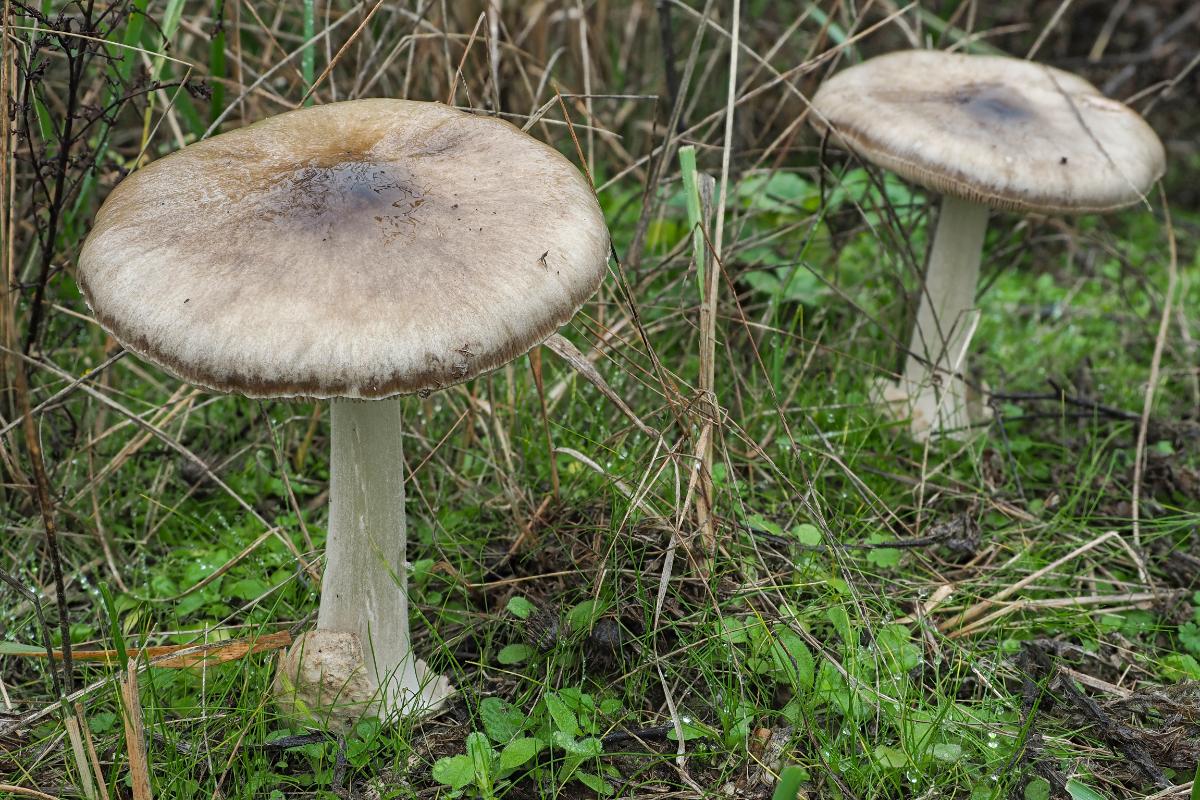
Jump to:
All About The Big Sheath Mushroom
In 1815, Swiss botanist Augustin Pyramus de Candolle gave the first formal description of this species. He named it Agaricus gloiocephalus. In 1878, French mycologist Claude Gillet transferred it to the genus Volvaria. However, this name was already taken for a genus of lichens. So, further name revisions were needed.
For much of the 20th century, this mushroom was known by the scientific name Volvariella speciosa or Volvariella gloiocephala. There was a long-standing debate about whether the white and dark forms of this mushroom represented different species or varieties. It was believed V.speciosa was the white version and V.gloiocephala was the gray one. It wasn’t until 1986 that mycologists Teun Boekhout and Manfred Enderle demonstrated that both color forms could arise from the same mycelium. This “settled” the taxonomic question, but a few people still think its not settled and maybe this is more of a species complex than one species with lots of physical variability.
In 2011, a phylogenetic study by Alfredo Vizzini and colleagues revealed that this species and a few close relatives formed a distinct clade separate from most other Volvariella species. This led to the creation of a new genus, Volvopluteus, with this mushroom as the type species.
This mushroom is known as the “big sheath mushroom” because of its large size and distinctive volva. Other names include “rose-gilled grisette” and “stubble rosegill,” which reference its gill coloring.
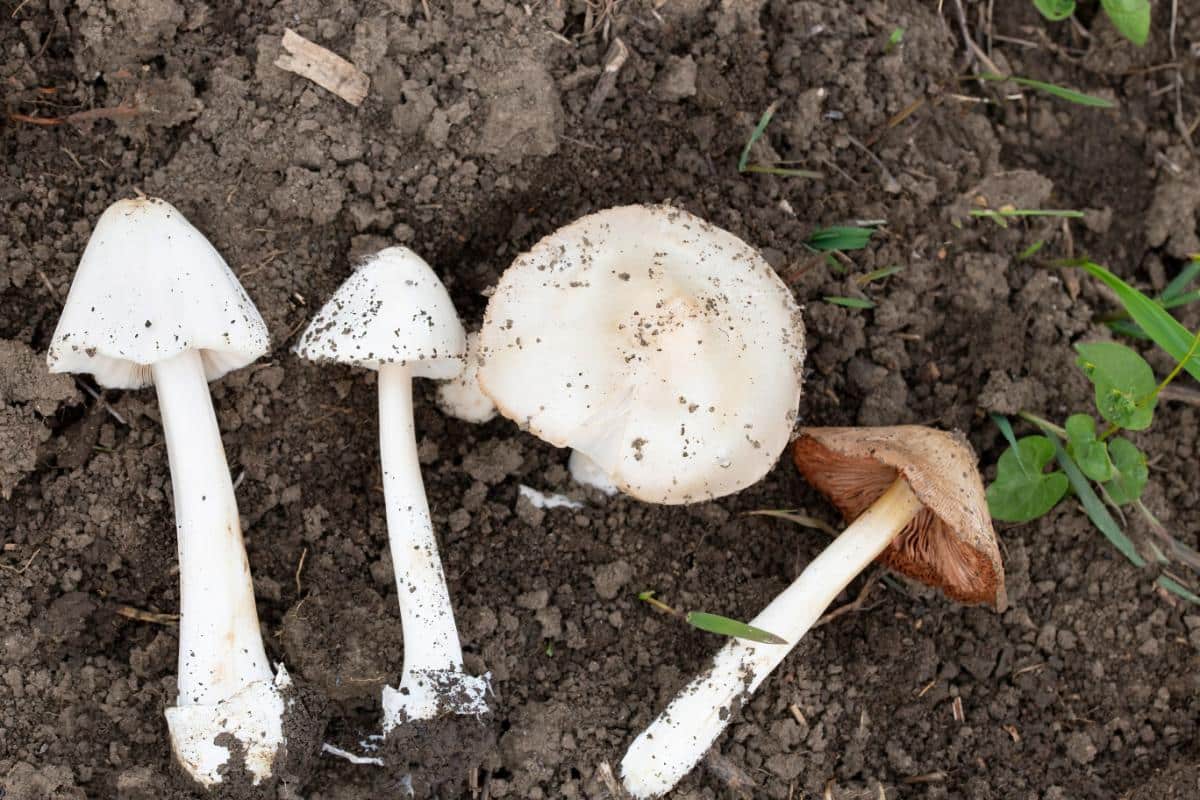
Big Sheath Mushroom Identification
Season
This mushroom fruits from late spring to early fall (typically May to October). It can be found year-round, depending on the climate.
Habitat
These mushrooms are commonly found in areas with abundant organic matter, particularly in grasslands, pastures, and cultivated fields. They are often spotted growing on decaying plant material like straw, compost heaps, or rotting wood. The big sheath mushroom is also known to colonize disturbed areas. It appears in gardens, along roadsides, and even in urban settings where suitable organic substrates are present. Finding the big sheath mushroom in urban and suburban landscapes is more common than in the woods.
This mushroom is saprobic, meaning it derives nutrients from decaying organic matter. It always grows from the ground, never from trees or wood. It may be attached to severely decomposed wood (like mulch), but never a log or trunk. Often, this mushroom grows in groups, but it also will fruit by itself.
The big sheath mushroom grows on all continents except Antarctica! Some years, patches of big sheath mushrooms fruit in huge numbers, a bumper year. And then, they may not fruit at all for a few years after that. So, if you find a patch, pay attention to when they show up and how often, and don’t be surprised if there are years between their appearances.
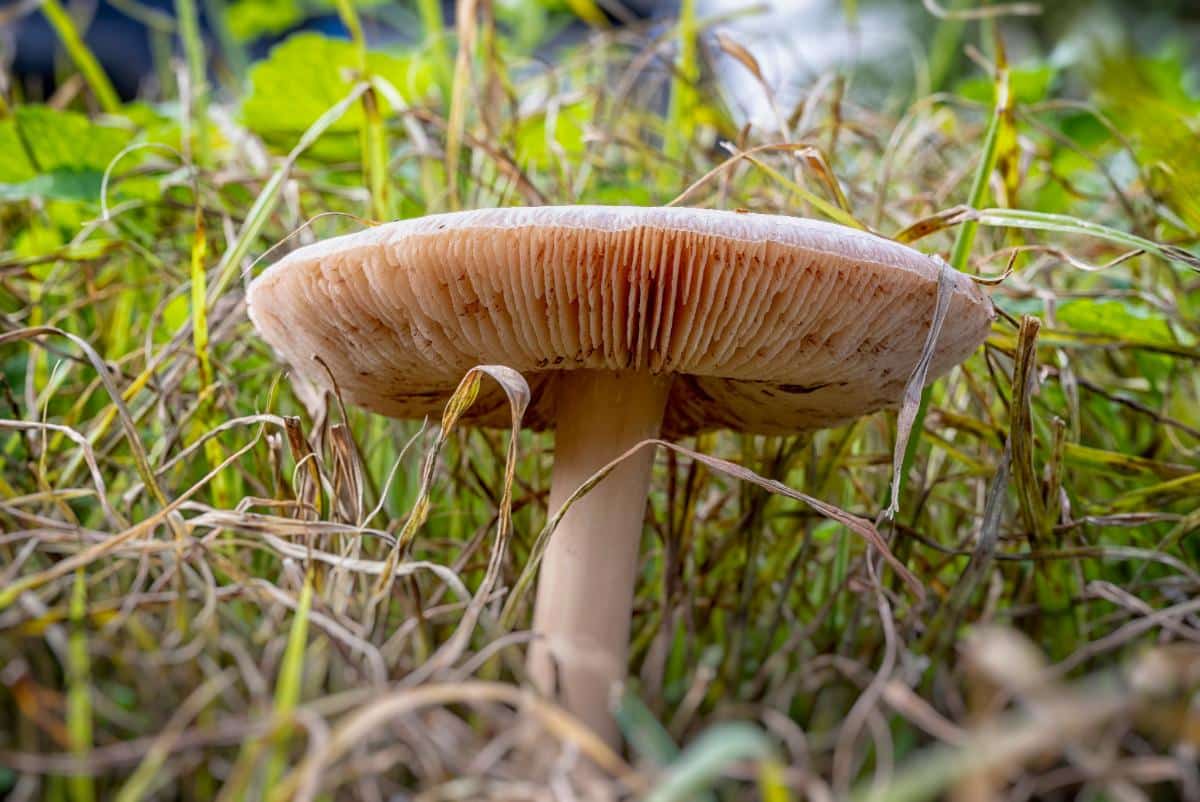

Identification
Cap
The cap of the big sheath mushroom is 2-6 inches in diameter, though sometimes it gets quite larger. When young, the cap is rounded or egg-shaped. It gradually expands to become bell-shaped and nearly flat with age.
The color of the cap is quite variable, ranging from pure white to grey or greyish-brown. The center of the cap is often darker than the rest. When fresh, the cap’s texture is smooth and notably sticky to the touch. As the mushroom ages, though, the cap becomes dry and takes on a silky feel. The cap also usually changes to brownish or yellowish with age.
The surface of the cap may appear slightly streaked or covered in tiny fibers. This is especially true in gray specimens. The streaking occurs radially, emanating out from the center of the cap. As the mushroom matures, the cap may develop a slight central depression, and the edges may become wavy or slightly upturned.
Gills
The gills of the big sheath mushroom are notably crowded and closely spaced. They are free from the stem, meaning they do not attach directly to it. The gills start out white when the mushroom is young. As it matures, the gills gradually transition to a pale pink hue and then eventually deepen to a salmon-pink or pinkish-brown color. This color change is an important identifying characteristic of the species.
The gill edges of the big sheath mushroom are generally smooth and even. They do not have any serrations or roughness.
Stem
The stem of the big sheath mushroom measures between 2 to 4 inches in length. The stem’s texture is generally smooth and firm. It has a slightly fibrous (thin fibers) structure that runs vertically along its length. Its color is predominantly white to pale gray, although sometimes it develops a slight yellowish tinge as the mushroom matures.
At the base of the stem, there is a volva or “sheath” that gives this mushroom its common name. It measures about 1 to 1.5 inches tall and looks like an egg cup or a small white bowl at the base of the stem. The big sheath mushroom’s stem is typically hollow, especially in mature specimens.
There is no ring around the stem – this is important for differentiating the big sheath from toxic Amanita species.
Taste and Odor
The taste of this mushroom is mild and not distinctive. Sometimes, it is described as slightly radish-like or reminiscent of raw potatoes. It does not have a strong or distinctive smell.
Flesh
The flesh is white and does not change color when cut or bruised. The texture is soft and fragile; the flesh crumbles easily.
Spore Print
The spore print is pink to salmon-pink to brownish-pink.
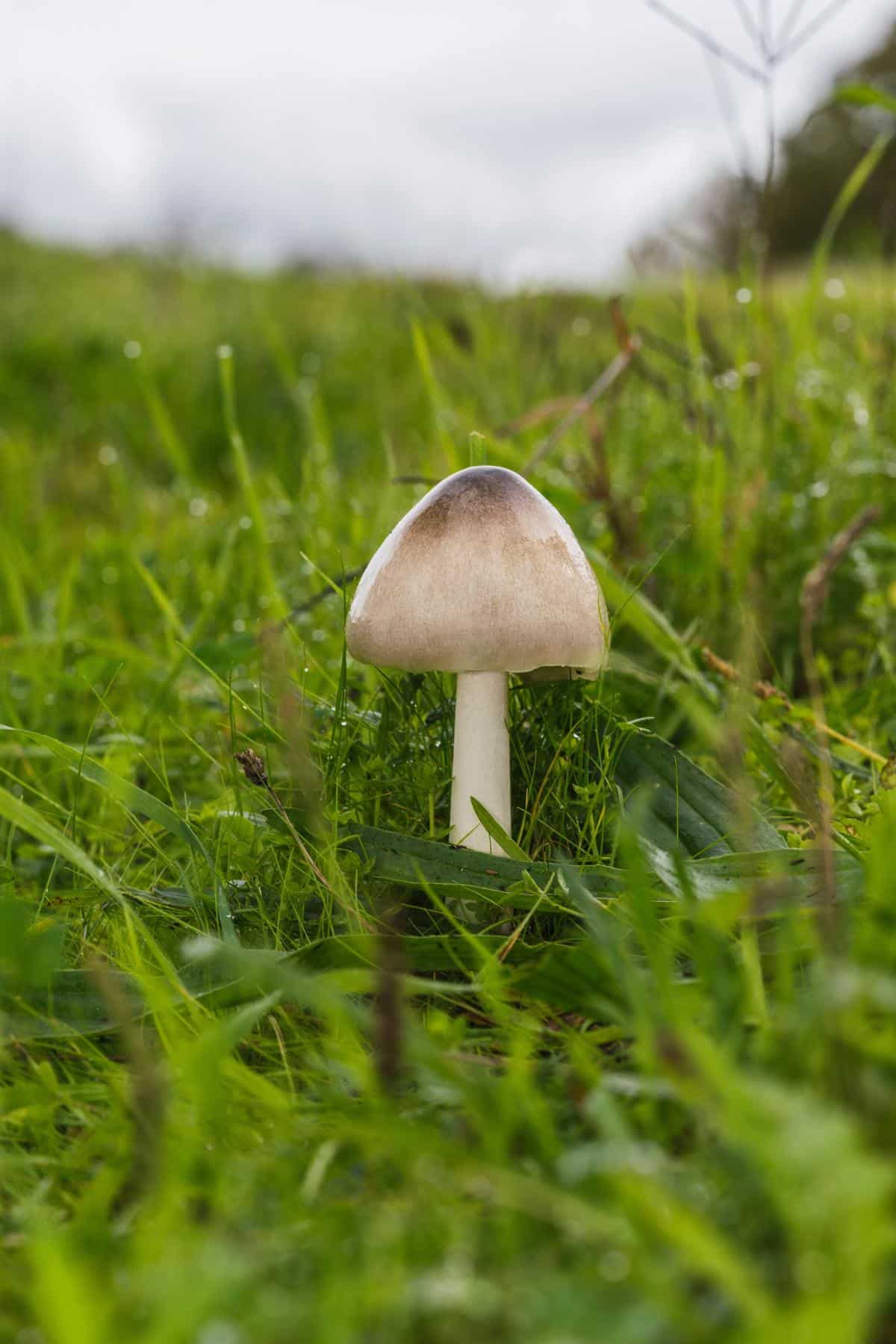
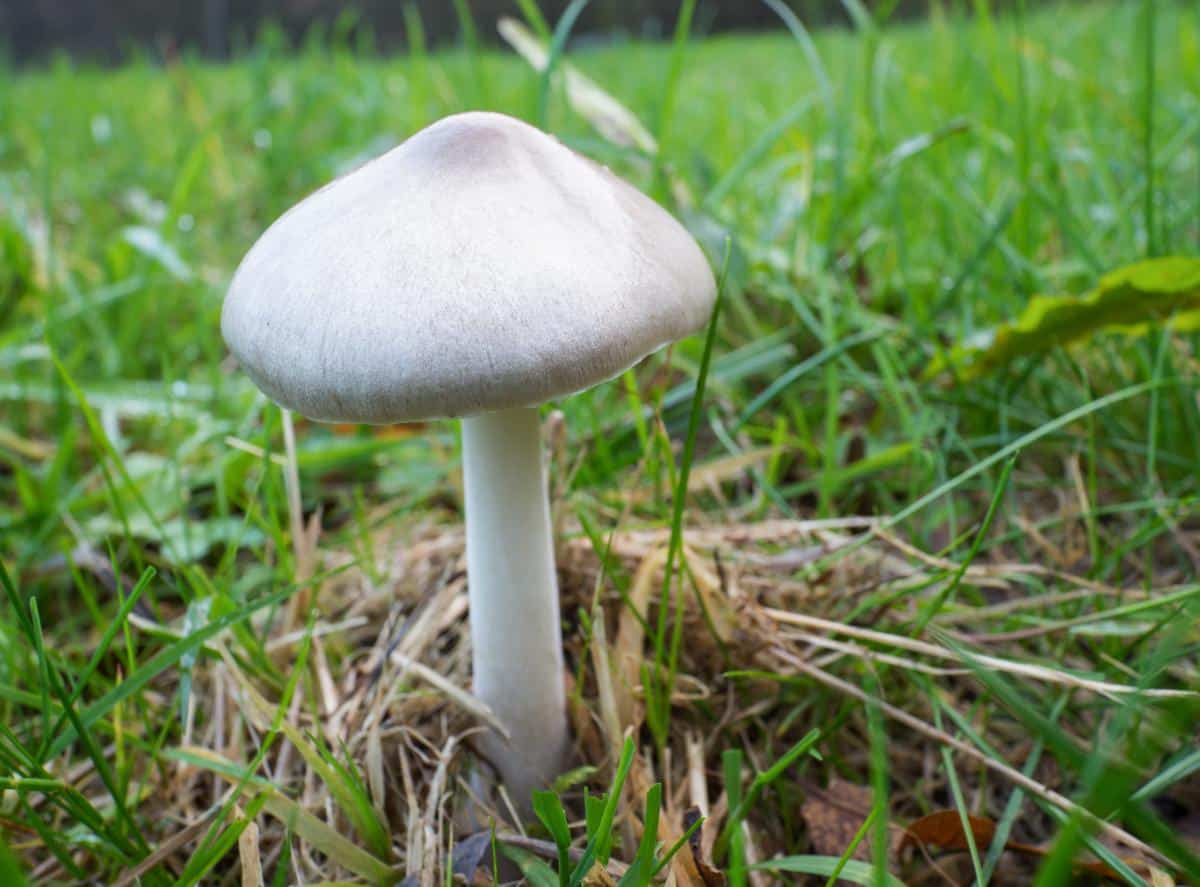
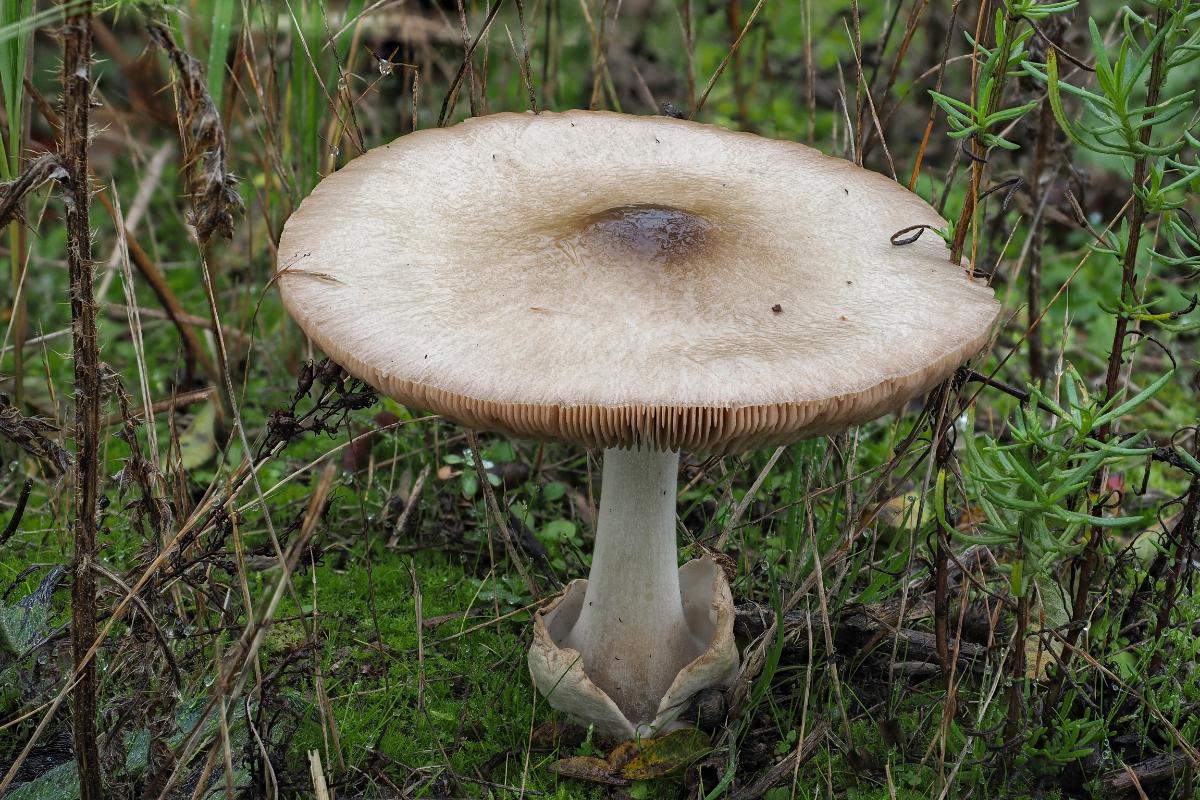
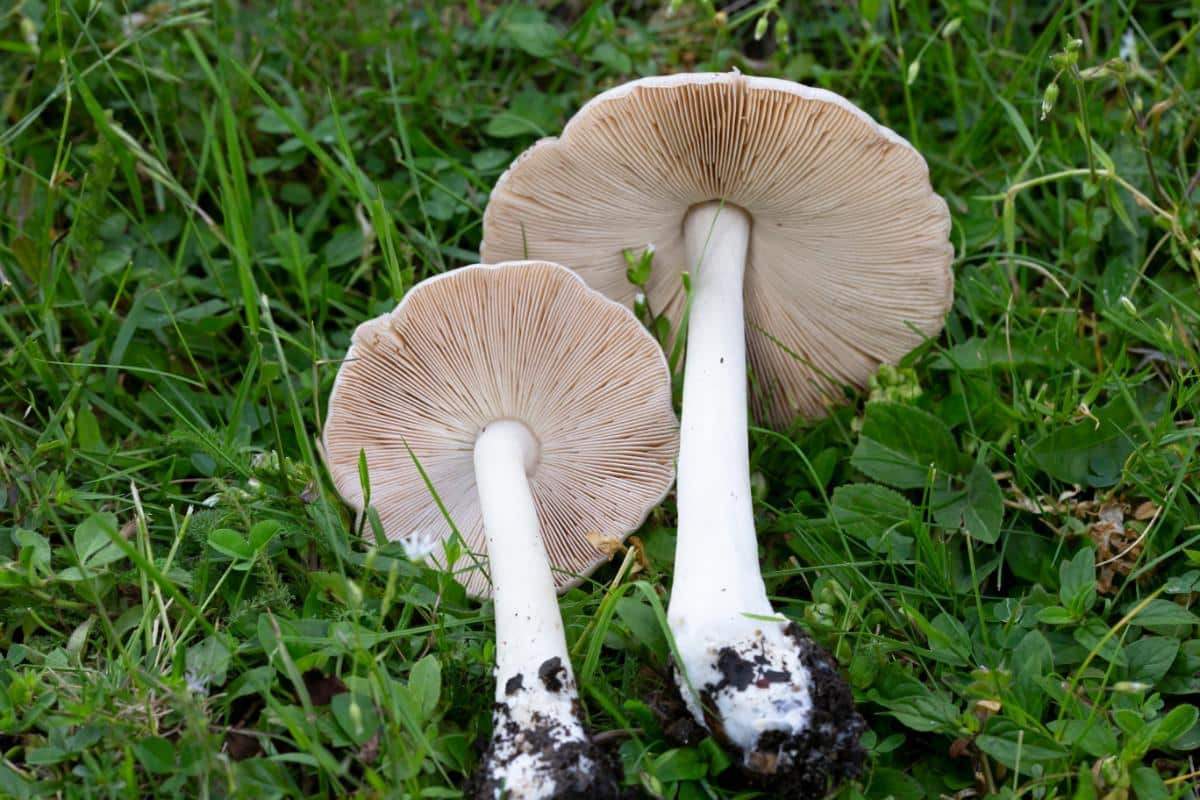
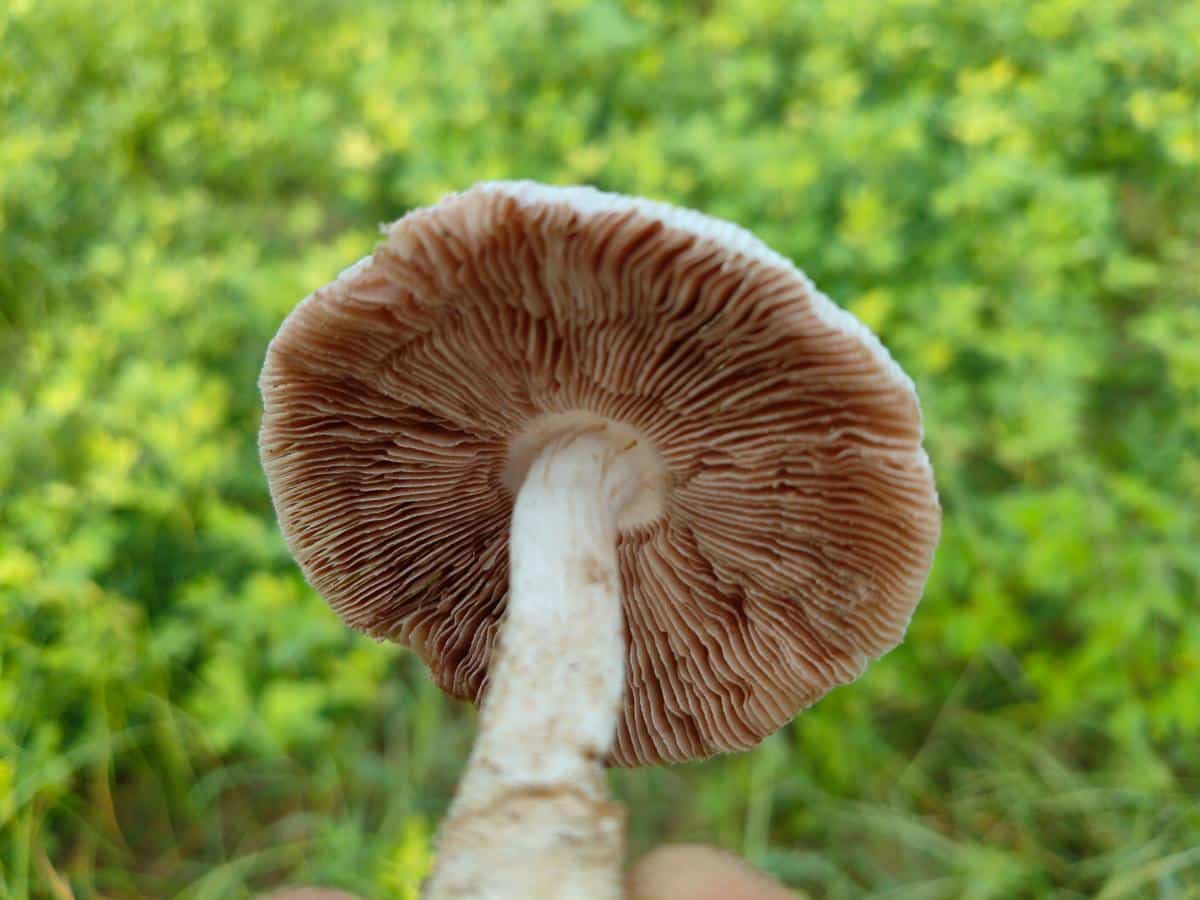
Big Sheath Mushroom Lookalikes
Amanita Species
Some of the most important lookalikes to be aware of are certain Amanita species, which include some of the most deadly poisonous mushrooms known. Amanita mushrooms also have a cup around the base of the stem, and this shared feature can cause a lot of confusion and potentially dangerous mistakes.
Several cases of confusion between Amanitas and Volvariella species have occurred in the US with dangerous consequences. The majority of these instances occurred when Asian immigrants to the US mistook an Amanita for the edible Volvariella species, which are commonly collected in their home country. If you intend to forage big sheath mushrooms, be extremely diligent with your ID!
- Destroying Angel (Amanita bisporigera and related species)
Destroying angels are a deadly Amanita species that looks a lot like the big sheath mushroom, especially when both species are young. They are both white with egg-shaped caps that haven’t opened up yet. They have a white cup around the base of the stem and they are similar in size.
At this point, too, they both have white gills. The destroying angel keeps these white gills while the big sheath mushroom’s gills turn pink with maturity. This is one key difference. The other big difference is that the destroying angel has a ring around the upper portion of the stem. The big sheath mushroom doesn’t not have a ring. Stem rings, though, can fall off, so this cannot be the only key identifying difference.
The absolute best way to tell these two apart is to do a spore print. Destroying angel spore prints are all white while sheath mushroom spore prints are light pink to brownish-pink.
Here is a first-hand accounting of a poisoning by destroying angel is you have any questions about what the experience is like. TLDR; it’s horrific.
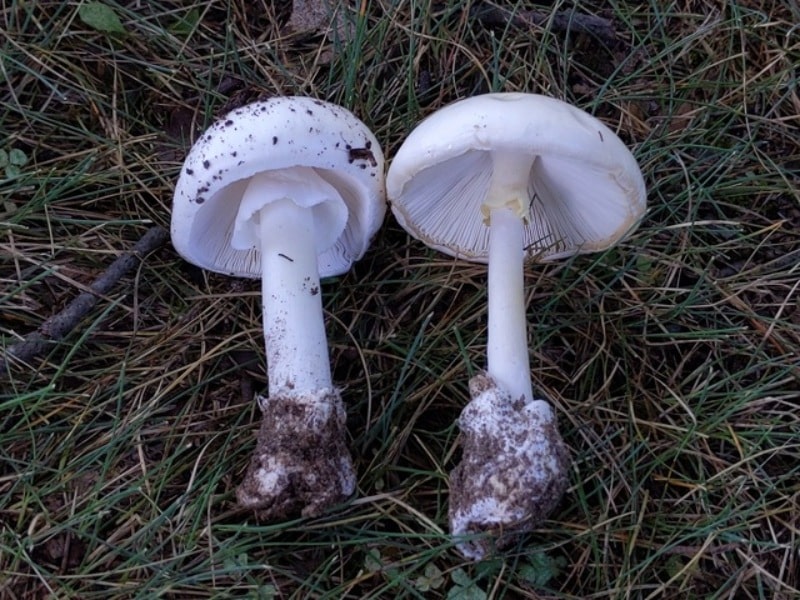
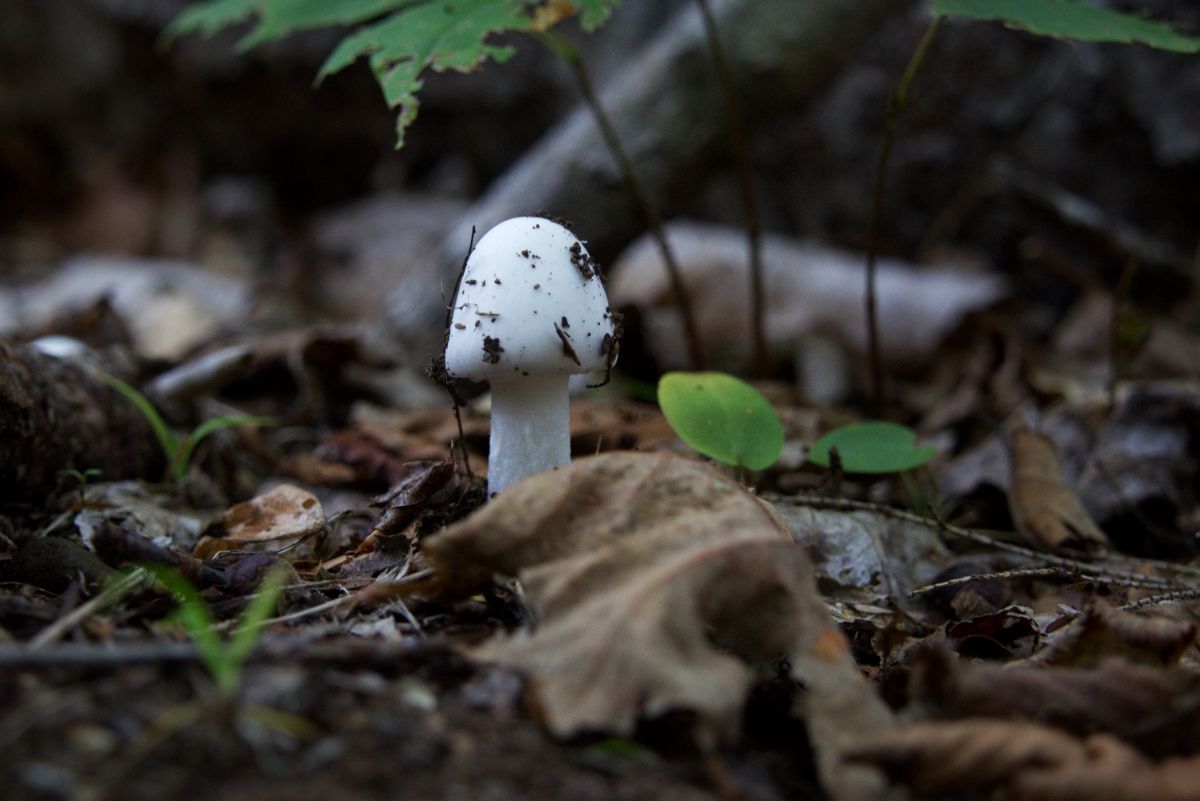
- Death Cap (Amanita phalloides)
This species is easier to differentiate from the big sheath but it still can get confusing. The death cap is a tall, stately mushroom with a white cup around the base of the stem, just like the big sheath. The primary difference is cap color. The death cap has a yellowish to greenish cap. However, this can be muted in some specimens and it can look more pale-ish white.
Another big difference is that the death cap has a distinctive ring around the upper portion of the stem. The big sheath never has this ring. Like with the destroying angel, the spore print is also different and if you are ever in doubt, do a spore print. The death cap has a white spore print and the big sheath has a pinkish/pinkish-brown one.
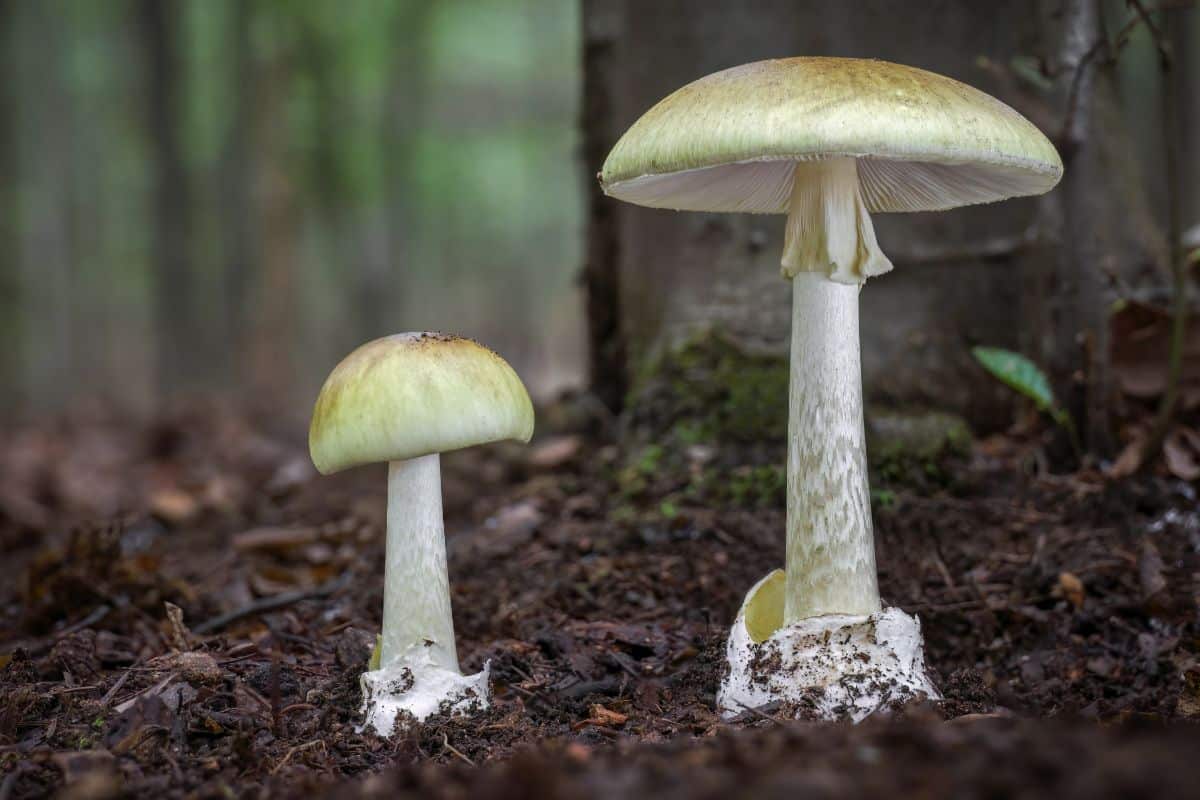
Volvariella Species (Close Relatives)
Some species in the genus Volvariella closely resemble the big sheath mushroom.
Silky Sheath (Volvariella bombycina)
The silky sheath mushroom is tall, has a whitish cap, and a cup around the base of the stem, just like the big sheath. It also has white gills that turn pinkish with age. There are several distinctive differences, though. The silky sheath grows on wood, not on the ground. It’s cap is also distinctly silky or hairy in texture. Another differentiating factor is the color of the volva (sac around the base of the stem). The silky sheath has a yellowish to dingy brown volva, while the big sheath’s volva is white.
This species is very widespread but it uncommon in all the places it occurs. It is an edible mushroom.
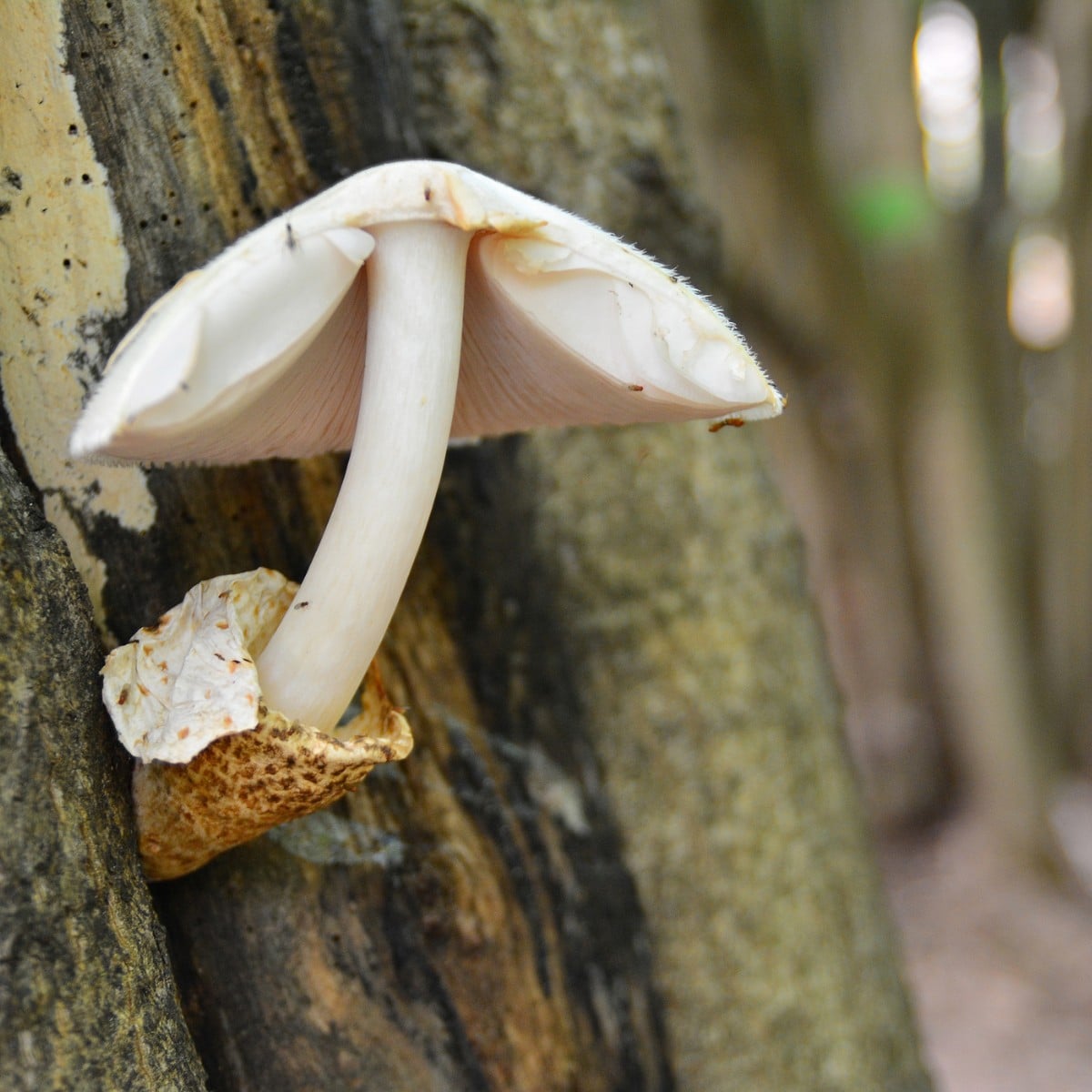
Paddy Straw Mushroom (Volvariella volvacea)
This widely foraged edible mushroom looks remarkably like the big sheath mushroom. It is tall with a grayish cap and white gills that turn pinkish with age. While the cap is usually grayish, it may be quite darker brown to almost black. When it is this color, it’s easier to differentiate from the big sheath.
The paddy straw mushroom’s volva (cup around the stem base) is brownish to black also, which is different from the big sheath’s white volva. Overall, this species is smaller than the big sheath.
Paddy straw mushrooms are not native to North America and it’s unlikely you’ll encounter them often. They are here, though, and often appear in woodchips, mulch, compost, greenhouses, and gardens.
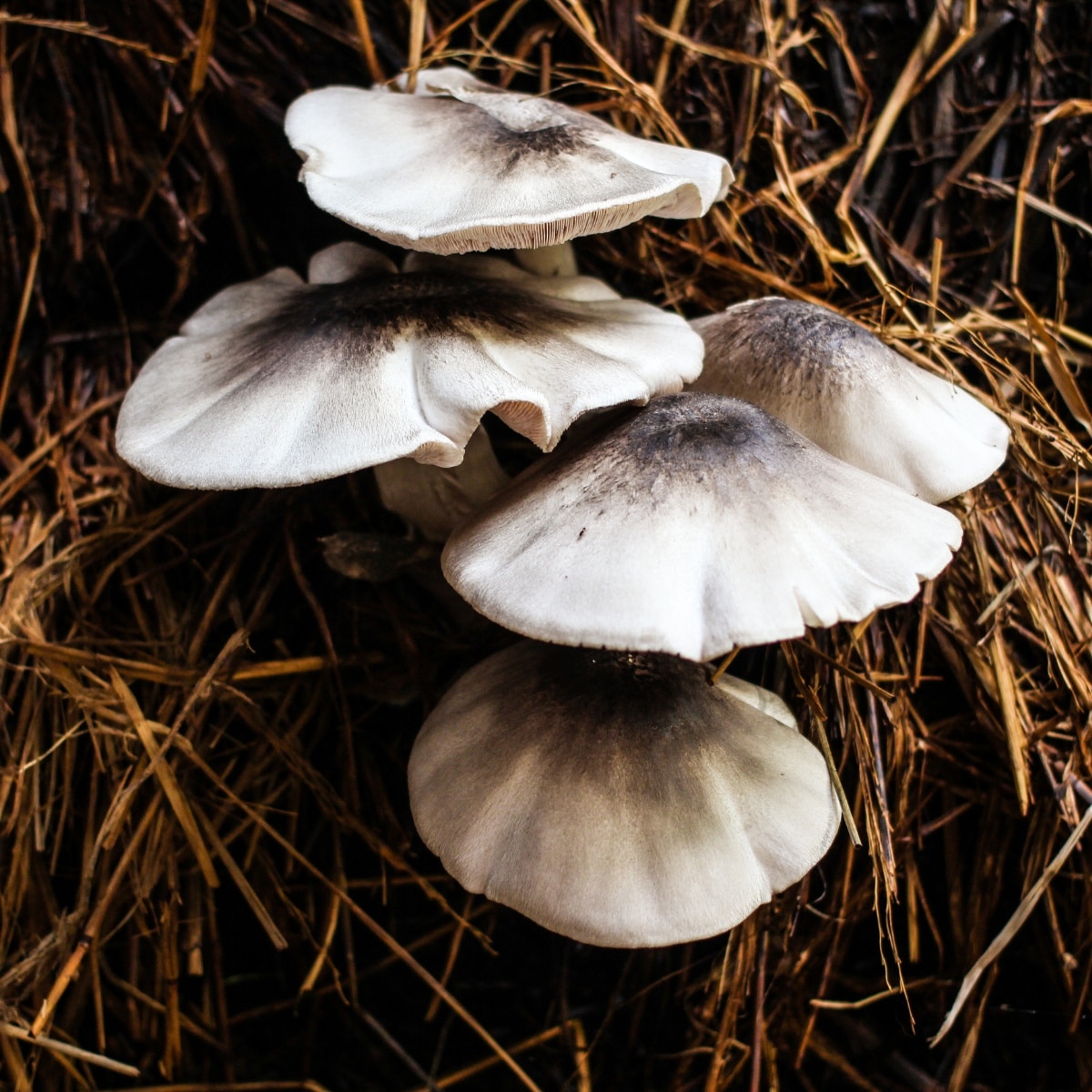
Deer Mushroom (Pluteus cervinus)
The deer mushroom shares a lot of similarities with the big sheath mushroom. They both have round, grayish caps with white gills and grow on the ground. And both have gills that turn pinkish with age. There are several key differences, though.
The deer mushroom does not have an egg-like volva cup at the base of the stem. It also usually grows on wood, too, unlike the big sheath mushroom which grows on the ground.
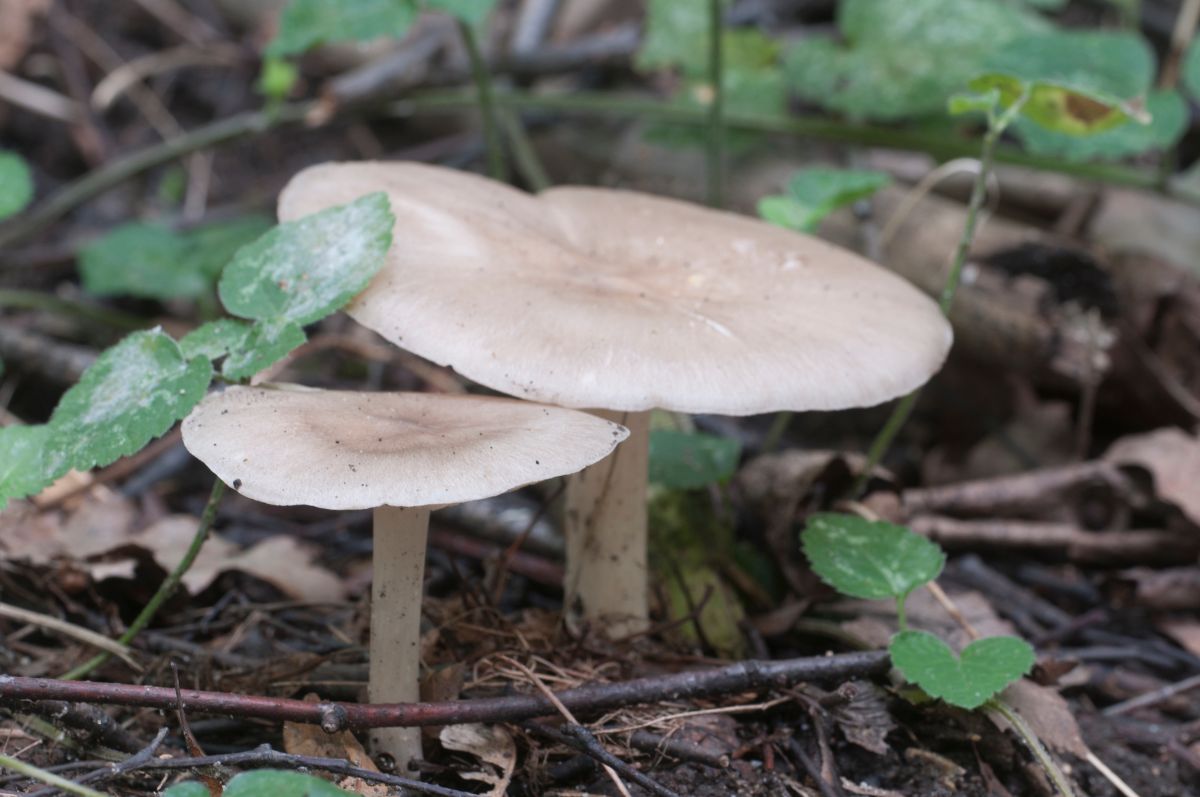
Entoloma species
Many Entoloma species resemble the big sheath mushroom. They have white to pinkish gills and grow in similar habitats. They usually also have grayish or whitish caps. The key difference is that entoloma mushrooms do not have a cup around the base of the stem.
Cooking With Big Sheath Mushrooms
The big sheath mushroom has a mild flavor and meaty texture. While not considered a gourmet mushroom, it is edible and a nice forest find when there’s little else around. Most people consider it poor quality compared to other edible wild mushrooms.
The flavor of these mushrooms is mild and somewhat earthy. It is sometimes described as slightly nutty. The texture is firm and meaty when young but becomes much softer with age. Big sheath mushrooms are best used in soups, stews, and casseroles to bulk them out – they are not mushrooms you prepare for their own flavor or interest.
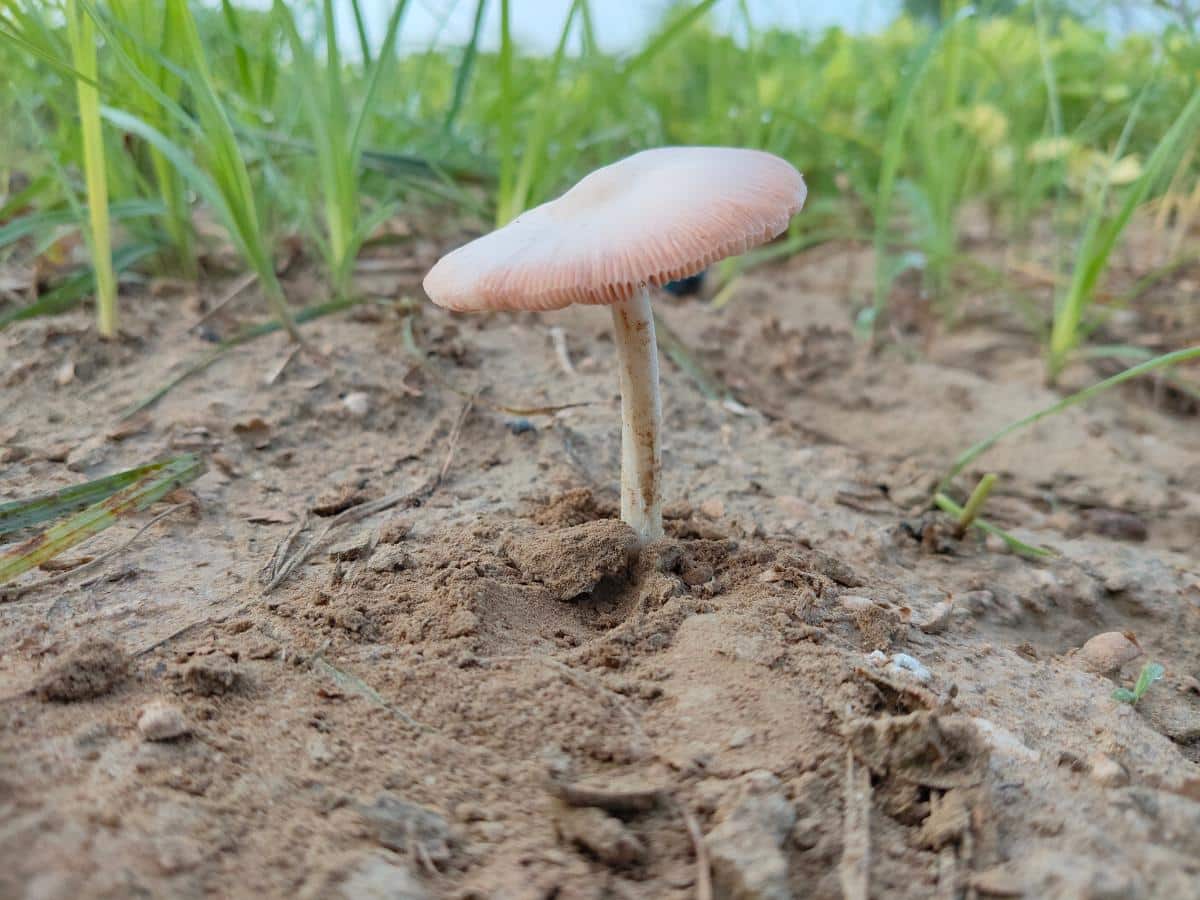
Common Questions About The Big Sheath Mushroom
Is the big sheath mushroom edible?
Yes, this mushroom is edible. It is not considered to be great eating, though. It also has several dangerous lookalikes, so identification must be very diligent.





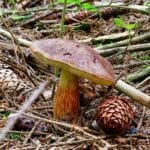
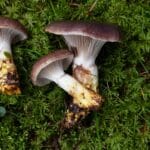
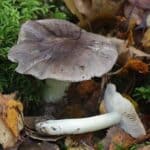

Leave a Reply